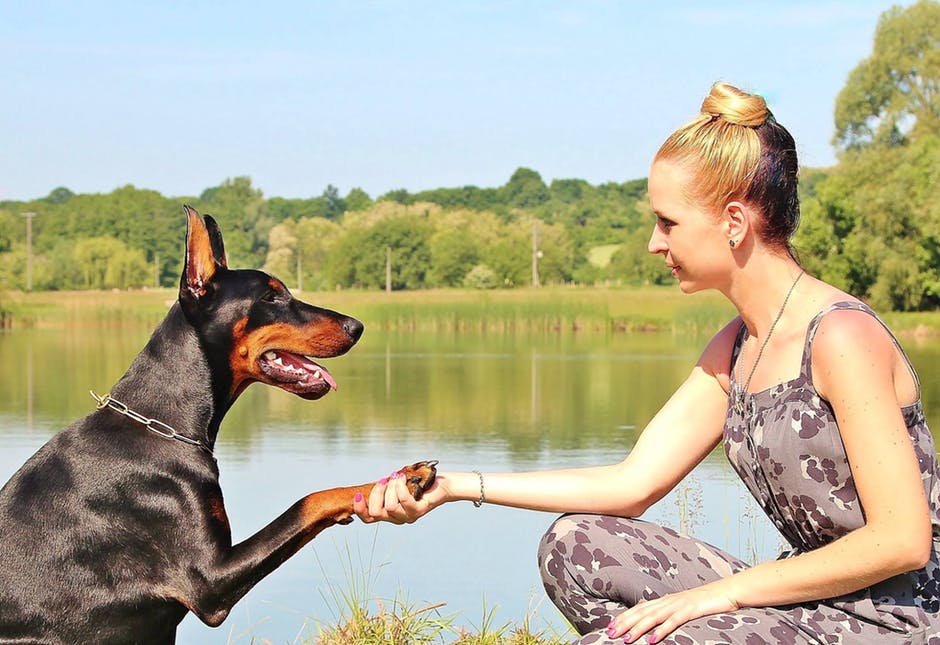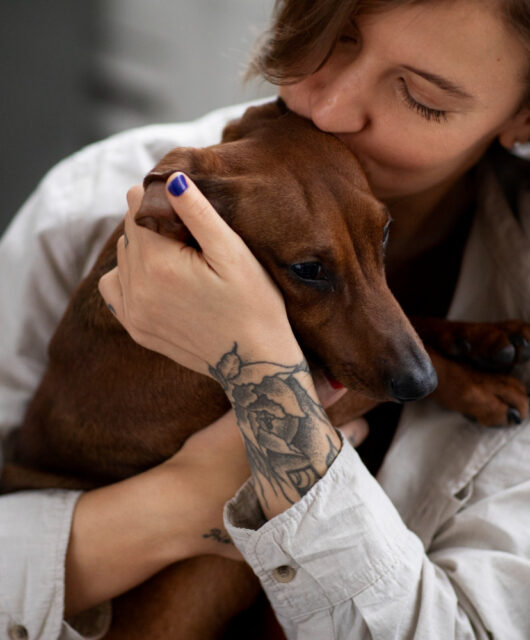What Is Positive Reinforcement Training In Dogs?
 A basic role of owners is training their dogs. But the best training techniques are ones that the dog finds fun and rewarding. Positive reinforcement training is one of these techniques used in dog training with great results.
A basic role of owners is training their dogs. But the best training techniques are ones that the dog finds fun and rewarding. Positive reinforcement training is one of these techniques used in dog training with great results.
Read on to learn more about positive reinforcement training in dogs, what it is, and how it works.
Table of Contents
What Is Positive Reinforcement Training?
Positive reinforcement training in dogs is a type of dog training that utilizes rewards and desired behaviors to train a dog. It does not use any painful or aversive techniques. Instead, it focuses on rewarding desired behaviors with treats, praise, and attention.
It is an effective method for teaching a dog how to obey commands, engage in activities, and keep their behavior in check. Positive reinforcement training encourages a deeper level of learning. It also helps to create a healthier bond and relationship between the dog and the owner.
By reinforcing desired behaviors, the dog eventually learns which behaviors please its owner. They will be more apt to focus on those behaviors.
Benefits of Positive Reinforcement Training for Dogs
The benefits of positive reinforcement training for dogs include the following:
- Quicker learning
- Improved communication
- Increased socialization
- Increased confidence
If you reward good behavior with food, treats, or verbal praise the moment it occurs, your pup will quickly learn which behaviors are acceptable and which are not. It is also less likely to cause distress and fear in your pup as it does not rely on punishment.
How to Implement Positive Reinforcement Training
Positive reinforcement training in dogs is a method of dog training that focuses on utilizing rewards, coupled with praise and affection, to shape a dog’s behavior. It is based on the principles of operant conditioning, which can be used to teach new behaviors and strengthen existing ones.
To implement positive reinforcement training, start with breaking down the desired behavior into small steps and rewarding each step along the way. This causes the dog to make a positive association between the behavior and the reward.
Timing is key, as the reward should come immediately after the behavior is completed. Setting up a routine and following it daily will most effectively create positive change in the dog’s behavior. It is also important to switch up the type and consistency of rewards used to keep the dog motivated and engaged.
You can also send your fur baby to a puppy training class for easier results.
Examples of Positive Reinforcement Training in Action
An example of positive reinforcement in action is by providing a treat or a belly rub to a dog after he sits on command. This reward reinforces the desirable dog behavior (sitting on command) and will help the dog to learn the command faster and remember it better.
Another example of positive reinforcement training in action is by rewarding the dog when he uses the bathroom in the appropriate spot rather than punishing the dog for going to the wrong place.
Train Your Dog Starting Today
Overall, positive reinforcement training is a valuable tool when used to train dogs. It succeeds by building a bond of trust between the pet and owner and ensuring an overall happy experience.
To experience the benefits of positive reinforcement training, try it yourself today and make your pup happy!
Did you find this article helpful? Check out the rest of our blog for more!









